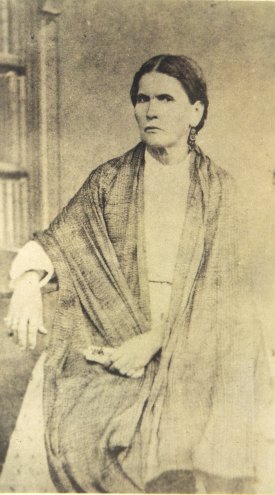Porfirio Díaz
Porfirio Díaz
Porfirio Díaz (15 September 1830 – 2 July 1915) was a Mexican general and politician who served seven terms as President of Mexico, a total of three and a half decades from 1876 to 1911. A veteran of the Reform War and the Second French intervention in Mexico, Díaz rose to the presidency after a series of military and political maneuvers, establishing a strong centralized state and ushering in a period of significant economic growth known as the Porfiriato.
Early Life and Military Career[edit | edit source]
Porfirio Díaz was born in Oaxaca, Mexico, to a mestizo family. He initially studied for the priesthood but joined the seminary of the Oaxaca Institute of Arts and Sciences where he was influenced by Benito Juárez. Díaz joined the army during the Mexican-American War and later fought in the Reform War on the side of the Liberals.
Rise to Power[edit | edit source]
Díaz first came to prominence during the Second French intervention in Mexico, where he played a key role in the defeat of the French Empire and the restoration of the Mexican Republic. After the war, he became a critic of President Benito Juárez and later President Sebastián Lerdo de Tejada. In 1876, Díaz led a successful revolt against Lerdo, known as the Plan of Tuxtepec, and assumed the presidency.
Presidency and the Porfiriato[edit | edit source]
Díaz's presidency is marked by the period known as the Porfiriato, characterized by significant economic development, modernization, and foreign investment. However, his regime was also marked by political repression, censorship, and the centralization of power. Díaz maintained control through a combination of political manipulation, patronage, and the use of the Rurales, a rural police force.
Economic and Social Policies[edit | edit source]
Under Díaz, Mexico saw the expansion of the railroad network, increased mining activities, and the growth of the hacienda system. However, these developments often benefited foreign investors and the Mexican elite, leading to widespread social inequality and discontent among the rural and working-class populations.
Fall from Power and Exile[edit | edit source]
By the early 20th century, opposition to Díaz's regime had grown significantly. The Mexican Revolution began in 1910, led by figures such as Francisco I. Madero, Emiliano Zapata, and Pancho Villa. Facing mounting pressure, Díaz resigned in May 1911 and went into exile in France, where he died in 1915.
Legacy[edit | edit source]
Porfirio Díaz remains a controversial figure in Mexican history. While his policies contributed to the modernization of Mexico, they also entrenched social inequalities and set the stage for the Mexican Revolution. His legacy is a subject of ongoing debate among historians and scholars.
Related Pages[edit | edit source]
- Mexican Revolution
- Benito Juárez
- Francisco I. Madero
- Emiliano Zapata
- Pancho Villa
- Reform War
- Second French intervention in Mexico
- Plan of Tuxtepec
- Porfiriato
| Presidents of Mexico |
|---|
|
|
Search WikiMD
Ad.Tired of being Overweight? Try W8MD's physician weight loss program.
Semaglutide (Ozempic / Wegovy and Tirzepatide (Mounjaro / Zepbound) available.
Advertise on WikiMD
|
WikiMD's Wellness Encyclopedia |
| Let Food Be Thy Medicine Medicine Thy Food - Hippocrates |
Translate this page: - East Asian
中文,
日本,
한국어,
South Asian
हिन्दी,
தமிழ்,
తెలుగు,
Urdu,
ಕನ್ನಡ,
Southeast Asian
Indonesian,
Vietnamese,
Thai,
မြန်မာဘာသာ,
বাংলা
European
español,
Deutsch,
français,
Greek,
português do Brasil,
polski,
română,
русский,
Nederlands,
norsk,
svenska,
suomi,
Italian
Middle Eastern & African
عربى,
Turkish,
Persian,
Hebrew,
Afrikaans,
isiZulu,
Kiswahili,
Other
Bulgarian,
Hungarian,
Czech,
Swedish,
മലയാളം,
मराठी,
ਪੰਜਾਬੀ,
ગુજરાતી,
Portuguese,
Ukrainian
Medical Disclaimer: WikiMD is not a substitute for professional medical advice. The information on WikiMD is provided as an information resource only, may be incorrect, outdated or misleading, and is not to be used or relied on for any diagnostic or treatment purposes. Please consult your health care provider before making any healthcare decisions or for guidance about a specific medical condition. WikiMD expressly disclaims responsibility, and shall have no liability, for any damages, loss, injury, or liability whatsoever suffered as a result of your reliance on the information contained in this site. By visiting this site you agree to the foregoing terms and conditions, which may from time to time be changed or supplemented by WikiMD. If you do not agree to the foregoing terms and conditions, you should not enter or use this site. See full disclaimer.
Credits:Most images are courtesy of Wikimedia commons, and templates, categories Wikipedia, licensed under CC BY SA or similar.
Contributors: Prab R. Tumpati, MD








